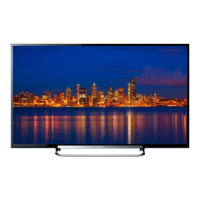
Do you have a question about the Sony Bravia KDL-60R550A and is the answer not in the manual?
| Screen Size | 60 inches |
|---|---|
| Display Type | LED |
| Resolution | 1920 x 1080 |
| HDMI Ports | 4 |
| USB Ports | 2 |
| Wi-Fi | Yes |
| Smart TV | Yes |
| Backlight Type | Edge LED |
| 3D Capable | No |
| Refresh Rate | 60Hz (Motionflow XR 240) |
Explains the prerequisites for experiencing HD programming on your new TV.
Lists and briefly describes key features of the BRAVIA TV for enhanced viewing.
Provides initial setup instructions, including stand attachment and ventilation.
Details the process of attaching the TV's table-top stand securely.
Identifies and describes the various input and output ports on the TV.
Provides guidelines for ensuring adequate ventilation when installing the TV near walls.
Explains how to connect cable or antenna systems for TV reception.
Guides on connecting HD cable or satellite boxes for high-definition programming.
Explains how to connect and use MHL-compatible mobile devices with the TV.
Illustrates connections for various external devices like VCRs, game consoles, and audio systems.
Offers crucial safety advice and methods to prevent the TV from tipping over.
Details how to secure the TV stand and the TV itself to prevent toppling.
Explains the process of anchoring the TV to the wall for enhanced safety.
Guides through the initial setup, including language, country, and channel scanning.
Instructions on how to correctly insert batteries into the remote control.
Detailed explanation of the functions of each button on the remote control.
Identifies and explains the function of physical TV controls and LED indicators.
Explains how to use the TV remote to control connected BRAVIA Sync compatible equipment.
Steps to activate and use the Picture-in-Picture (PIP) feature for simultaneous viewing.
How to add, manage, and access favorite channels and inputs for quick access.
Instructions for setting the TV to automatically adjust screen display based on signal resolution.
How to adjust screen modes specifically for PC input signals.
Steps to manage and label external inputs for easier identification and selection.
Important considerations and limitations when playing media files from a USB device.
Explains how to watch 3D content and switch between 3D and 2D display modes.
Safety warnings and precautions for using 3D glasses and viewing 3D content.
How to connect the TV to a home network for accessing media content.
How to manage connected devices for screen mirroring.
Steps to select photos from various sources for the photo frame feature.
Instructions for setting up a wired network connection for the TV.
Detailed guide for setting up a secure internet connection using WPS.
Guide for securing internet connection without WPS.
How to check network settings and troubleshoot connection issues.
Instructions on how to use the internet browser on the TV.
Steps to access and use the Sony Entertainment Network services.
How to access and launch applications available on the TV.
Overview of accessing and using the Sony Entertainment Network feature.
Explains how to organize and access photo, music, and video files.
Details the different picture modes available to optimize image quality.
Explains advanced picture settings for fine-tuning image display.
Describes various sound modes for different types of content.
Options for adjusting the screen aspect ratio and display size.
Specific screen settings for when a PC is connected to the TV.
How to select the signal type for cable or antenna reception.
How to set and manage a password for parental lock features.
Customizing parental lock rating options for US models.
Customizing parental lock rating options for Canadian models.
Settings related to network connectivity, including setup and priority.
Options for customizing the photo frame display, clock, and music playback.
Options for turning closed captions on or off, or enabling them when muted.
Controls for displaying or hiding information banners on the screen.
How to link and control BRAVIA Sync compatible equipment.
Instructions for updating the TV's system software.
Options to adjust power consumption settings for energy efficiency.
Table detailing supported PC resolutions and signal formats for HDMI/MHL inputs.
Steps to prepare the TV for wall mounting, including stand detachment.
Initial checks and common issues to consider before contacting support.
Explains common causes and solutions for poor picture quality.
Troubleshooting steps for no sound or noisy audio output.
Troubleshooting tips for interruptions in screen mirroring audio or video.
Explains why the picture might suddenly become smaller, especially during commercials.
Instructions on how to perform a factory reset and recover a lost password.
Troubleshooting steps when a DLNA media server cannot be accessed.
Compliance information related to FCC and other regulatory bodies.
Technical specifications for the TV's system, including television standards and panel type.
Details regarding power requirements, consumption, screen size, dimensions, and mass.
List of accessories included with the TV.
Information on how to register the TV online for updates and support.
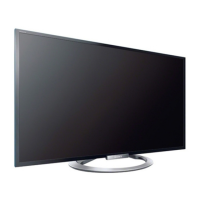


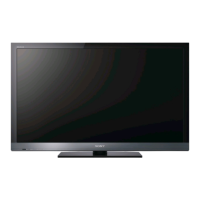
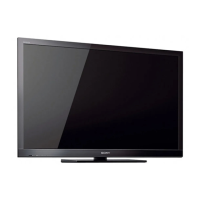
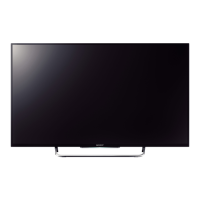
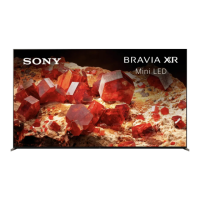

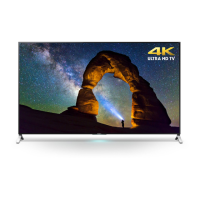
